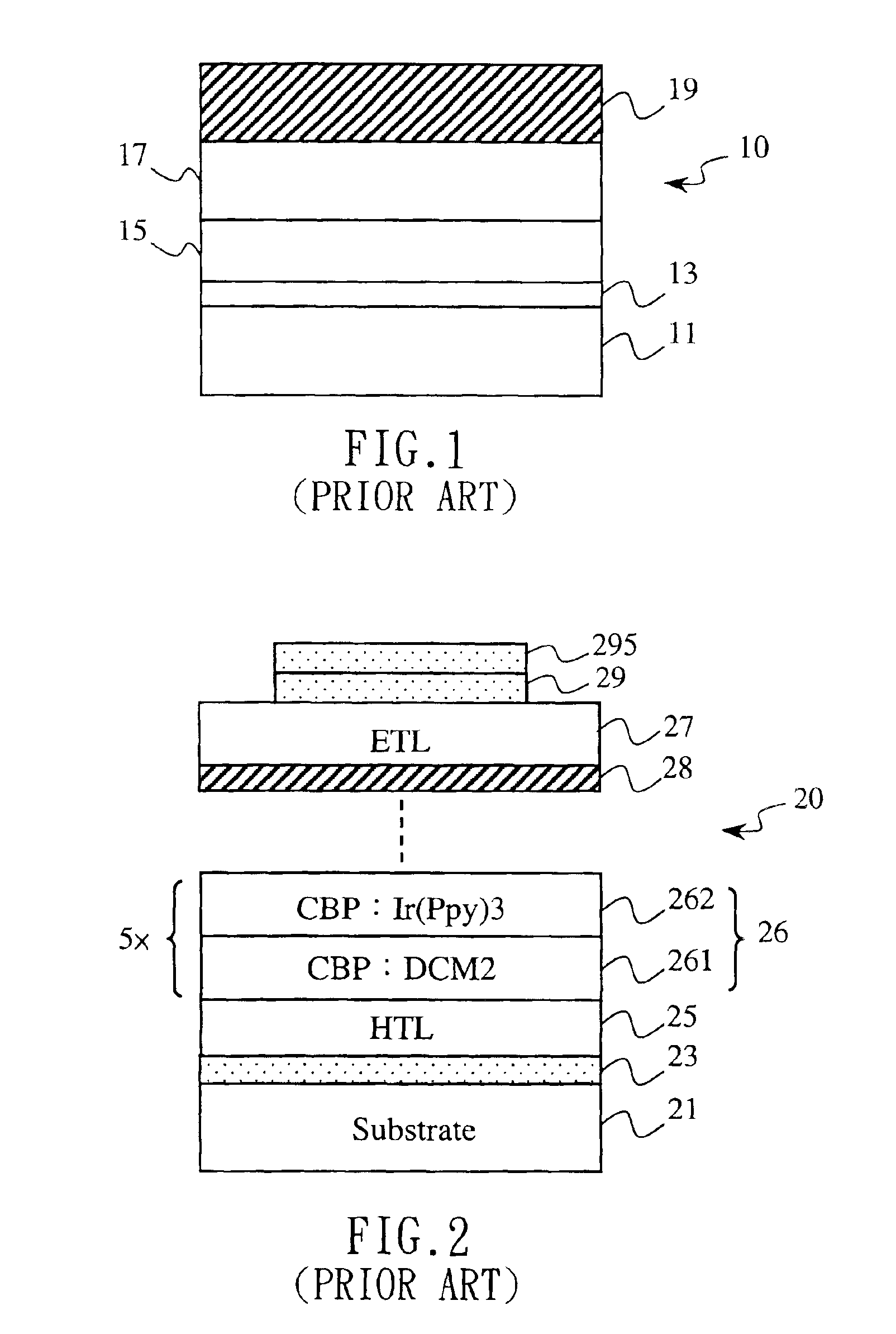Organic electroluminescent device and method for producing the same
a light-emitting device and electroluminescent technology, applied in thermoelectric devices, discharge tubes/lamp details, discharge tubes luminescnet screens, etc., can solve the problems of reducing the luminescence efficiency of the triplet phosphorescence under high-density current, the final object of projecting white light of full color cannot be achieved, and the triplet energy transfer originated from the conductive host material, etc., to achieve the effect of effective raising luminescence efficiency and service life,
- Summary
- Abstract
- Description
- Claims
- Application Information
AI Technical Summary
Benefits of technology
Problems solved by technology
Method used
Image
Examples
Embodiment Construction
[0019]Firstly, referring to FIG. 4, there is shown a structural cross-section view of one embodiment of the present invention. As illustrated in this figure, an organic electroluminescent device 30 of the present invention essentially comprising forming a first conductive layer 33 (for example, anode) onto the top side of a light-transparent substrate 31 by vapor deposition, sputtering deposition, and so on, Subsequently, onto the top side of the anode 33, there may be formed with, in turn, a hole injecting layer 53 (HIL; first carrier injecting layer), a hole transporting layer 35 (HTL; first carrier transporting layer), and an electron blocking layer 47 for blocking the second carrier (electron) to proceed. Onto the top side of the electron blocking layer 47, there may be then further formed with, in turn, a first host material layer 41 (Host 1) and a second host material layer 43 (Host 2), and the top side of the second host material layer 43 may be further formed with a hole blo...
PUM
 Login to View More
Login to View More Abstract
Description
Claims
Application Information
 Login to View More
Login to View More - R&D
- Intellectual Property
- Life Sciences
- Materials
- Tech Scout
- Unparalleled Data Quality
- Higher Quality Content
- 60% Fewer Hallucinations
Browse by: Latest US Patents, China's latest patents, Technical Efficacy Thesaurus, Application Domain, Technology Topic, Popular Technical Reports.
© 2025 PatSnap. All rights reserved.Legal|Privacy policy|Modern Slavery Act Transparency Statement|Sitemap|About US| Contact US: help@patsnap.com



